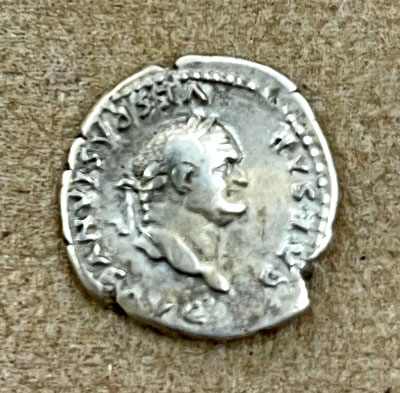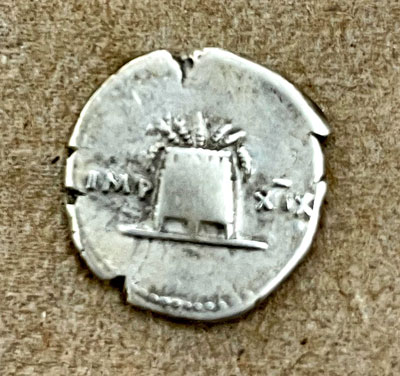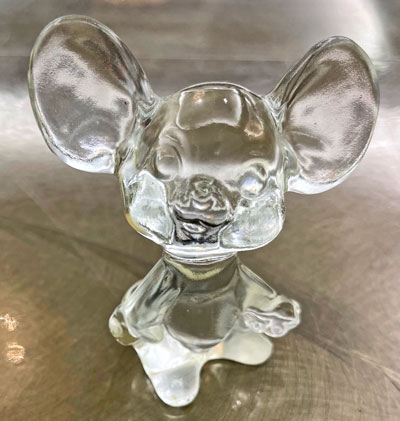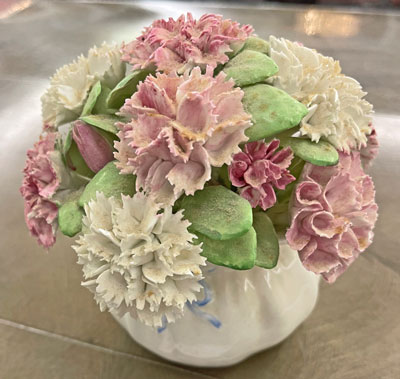© Copyright Atlanta Coin Expositions, 2008-2025. All Rights Reserved.
Several of the links on the pages within this web site go to affiliate vendors.
A vendor affiliation can mean a small monetary compensation to the web site owner at no additional cost to you.
Several of the links on the pages within this web site go to affiliate vendors.
A vendor affiliation can mean a small monetary compensation to the web site owner at no additional cost to you.
Coin Show
Information
Shop
General
Next Monthly Coin Show
Coin Show - Monthly Notes for March 2021
Mark your calendar and join us at the next show on Sunday, April 11, 2021 in the Joe Mack Wilson ballroom.
As usual, the bourse will be filled with dealers and their showcases packed with coins, currency, bullion, exonumia, scripophily, semi-precious stones, jewelry and other interesting items.
Visitors to the show are welcome to buy, sell, trade or just look at the many different treasures found at the show.
Also, visitors are welcome to bring items such as coins, currency and bullion to obtain free verbal appraisals from the dealers at the show.
The April show will occur unless we are forced to close by state, county, local, hotel or COVID-19 officials. Check with this web site, the recorded show message (770-772-4359) or join our mailing list to receive information about the shows.
IMPORTANT: Masks WILL BE REQUIRED to enter the show due to the continued concern about the spread of the COVID-19 virus.
Make a reminder note and visit the next Greater Atlanta Coin Show on Sunday, April 11, 2021 in the Joe Mack Wilson ballroom to buy, sell, trade or just browse among the many items on display.
As usual, the bourse will be filled with dealers and their showcases packed with coins, currency, bullion, exonumia, scripophily, semi-precious stones, jewelry and other interesting items.
Visitors to the show are welcome to buy, sell, trade or just look at the many different treasures found at the show.
Also, visitors are welcome to bring items such as coins, currency and bullion to obtain free verbal appraisals from the dealers at the show.
The April show will occur unless we are forced to close by state, county, local, hotel or COVID-19 officials. Check with this web site, the recorded show message (770-772-4359) or join our mailing list to receive information about the shows.
IMPORTANT: Masks WILL BE REQUIRED to enter the show due to the continued concern about the spread of the COVID-19 virus.
Make a reminder note and visit the next Greater Atlanta Coin Show on Sunday, April 11, 2021 in the Joe Mack Wilson ballroom to buy, sell, trade or just browse among the many items on display.
On a beautiful day, the March 2021 Greater Atlanta Coin Show provided a bourse filled with dealers and their showcases containing coins, currency, bullion and other collectible items.
Many visitors came to the show to join the fun and camaraderie found among the displays of numismatic and other treasures.
We appreciate all of the guests who came to the show to browse, buy, sell and trade with the dealers.
Additionally, we always appreciate our dealers, our security and the hotel's staff for supporting the show each month.
Many visitors came to the show to join the fun and camaraderie found among the displays of numismatic and other treasures.
We appreciate all of the guests who came to the show to browse, buy, sell and trade with the dealers.
Additionally, we always appreciate our dealers, our security and the hotel's staff for supporting the show each month.
Not quite spring on the calendar, but Mother Nature provided a gorgeous day with temperatures in the upper 70s, maybe even into the 80s.
Lots of people enjoyed the day outside and came to spend a couple of hours inside among all the treasures.
In the hotel, the renovations continued. Just inside the front entrance, major changes are occurring. Also, the pub restaurant appears to be very different, however it will not be open for visitors to enjoy the changes until the June/July timeframe.
Lots of people enjoyed the day outside and came to spend a couple of hours inside among all the treasures.
In the hotel, the renovations continued. Just inside the front entrance, major changes are occurring. Also, the pub restaurant appears to be very different, however it will not be open for visitors to enjoy the changes until the June/July timeframe.
Meanwhile, events at the hotel continue to be down as people are still worried about the potential spread of COVID.
Though, as noted, the coin show welcomed many guests, and we appreciate all of you.
With that brief summary, let's take a look at just a few items located on the bourse.
Though, as noted, the coin show welcomed many guests, and we appreciate all of you.
With that brief summary, let's take a look at just a few items located on the bourse.
Vespasian Silver Denarius 69-79 AD


Vespasian served as the Roman emperor from 69 to 79 AD arriving to power in the fourth and last in the Year of the Four Emperors. He founded the Flavian dynasty that ruled the Empire for 27 years. [Vespasian ruled 1 July 69 - 24 June 79 AD.]
After a successful campaign in Judaea, Flavius Vespasianus was declared emperor by his troops at Alexandria in 69 A.D. Upon the defeat of Vitellius by the Danubian legions, Vespasian went to Rome and consolidated his power.
After a successful campaign in Judaea, Flavius Vespasianus was declared emperor by his troops at Alexandria in 69 A.D. Upon the defeat of Vitellius by the Danubian legions, Vespasian went to Rome and consolidated his power.
With the Empire in chaos and bankrupt, Flavius Vesparsianus developed unorthodox means to rebuild the Roman realm. During his reign, he built the Coliseum and other important public works.
Vespasian was popular, being both down to earth and possessing great wit. He was responsible for the economic and military recovery of Rome and is justly regarded as one of the greatest Roman emperors.
As for the coins, Vespasian started striking coins in his name while in Judaea as governor under Nero. He struck Imperial coins not only in his name, but in the names of his two sons Titus and Domitian (both as Caesar).
Vespasian was popular, being both down to earth and possessing great wit. He was responsible for the economic and military recovery of Rome and is justly regarded as one of the greatest Roman emperors.
As for the coins, Vespasian started striking coins in his name while in Judaea as governor under Nero. He struck Imperial coins not only in his name, but in the names of his two sons Titus and Domitian (both as Caesar).
Our first specimen is an ancient Roman coin that shows Caesar Vespasianus on the obverse with a modius (a dry measure that can contain about a peck) and corn ears on the reverse.
For us, this interesting artifact contains not quite 2000 years of history. If only it could tell the tales from its journey through the years.
This particular coin is a denarius.
The denarius was the standard Roman silver coin from its introduction in the Second Punic War c. 211 BC to the reign of Gordian III (AD 238-244), when it was gradually replaced by the Antoninianus. It continued to be minted in very small quantities, likely for ceremonial purposes, until and through the tetrarchy (AD 293-313).
The word denarius is derived from Latin. The word for "money" descends from it in Italian (denaro), Slovene (denar), Portuguese (dinheiro), and Spanish (dinero). Its name also survives in the dinar currency.
The denarius was the standard Roman silver coin from its introduction in the Second Punic War c. 211 BC to the reign of Gordian III (AD 238-244), when it was gradually replaced by the Antoninianus. It continued to be minted in very small quantities, likely for ceremonial purposes, until and through the tetrarchy (AD 293-313).
The word denarius is derived from Latin. The word for "money" descends from it in Italian (denaro), Slovene (denar), Portuguese (dinheiro), and Spanish (dinero). Its name also survives in the dinar currency.
1891 CC Morgan Silver Dollar Coin


The obverse contains an image of Liberty with an heraldic eagle on the reverse.
This coin, though not certified as such, is noted as being Choice Proof-Like.
The Red Book notes Choice Proof (PF-63) as: "Surfaces are reflective, with only a few blemishes in secondary focal places. No major flaws."
In general, the ANA Grading Guide describes PF-63 as: "Mirrored (or other Proof style) fields may be slightly impaired. Numerous small contact marks, and a few scattered heavy marks, may be seen. Hairlines are light but extensive and are visible without magnification. Several detracting scuff marks or defects may be present throughout the design or in the fields. The general quality is about average, but overall the coin is rather attractive."
This coin, though not certified as such, is noted as being Choice Proof-Like.
The Red Book notes Choice Proof (PF-63) as: "Surfaces are reflective, with only a few blemishes in secondary focal places. No major flaws."
In general, the ANA Grading Guide describes PF-63 as: "Mirrored (or other Proof style) fields may be slightly impaired. Numerous small contact marks, and a few scattered heavy marks, may be seen. Hairlines are light but extensive and are visible without magnification. Several detracting scuff marks or defects may be present throughout the design or in the fields. The general quality is about average, but overall the coin is rather attractive."
Moving forward in time, the next example comes from the Carson City mint as an 1891 Morgan Silver Dollar Coin.
Designed by George T. Morgan, the US Mint produced this silver dollar coin during the years from 1878 into 1921, though it was not struck every year. They utilized the mints in Philadelphia, New Orleans, Carson City, Denver and San Francisco through the life of the coin.
Designed by George T. Morgan, the US Mint produced this silver dollar coin during the years from 1878 into 1921, though it was not struck every year. They utilized the mints in Philadelphia, New Orleans, Carson City, Denver and San Francisco through the life of the coin.
Interestingly, the Red Book comments, "Sharply struck, proof-like Morgan dollars have highly reflective surfaces and are very scarce, usually commanding substantial premiums."
In 1891, the US Mint struck over 23.5 million of the Morgan silver dollar coins across the Philadelphia, New Orleans, Carson City and San Francisco.
But, of those 23.5+ million coins, the Carson City mint struck the least number at just over 1.6 million coins.
When the mintages are not equitable across the mint locations, the smaller mintage coins can become more desirable. In this case, an 1891 CC dollar is more valuable than its counterparts.
Perhaps the coin should be certified to achieve its highest value. However, with its luster and its mintage levels, this 1891 CC dollar presents a beautiful and rare example of the Morgan Silver Dollar Coin.
In 1891, the US Mint struck over 23.5 million of the Morgan silver dollar coins across the Philadelphia, New Orleans, Carson City and San Francisco.
But, of those 23.5+ million coins, the Carson City mint struck the least number at just over 1.6 million coins.
When the mintages are not equitable across the mint locations, the smaller mintage coins can become more desirable. In this case, an 1891 CC dollar is more valuable than its counterparts.
Perhaps the coin should be certified to achieve its highest value. However, with its luster and its mintage levels, this 1891 CC dollar presents a beautiful and rare example of the Morgan Silver Dollar Coin.
1960 Proof Lincoln Cent - Large Date over Small Date


In the United States Proof Sets and Mint Sets book, Ron Guth and Bill Gale comment:
"1960 was a great year for the variety collector. Some of the most spectacular Proof varieties occurred this year. The first varieties to come out of 1960 were the Large Date and Small Date varieties. The Small Date appears to be 10-15 times rarer than the Large Date. S0me of the sets may contain the following very rare varieties:
• 1960 Tripled Die Obverse Cent with a Large Date over a Small Date
• 1960 Doubled Die Obverse Cent with a Large Date over a Small Date
• 1960 Doubled Die Obverse Cent with a Small Date over a Large Date
• 1960 Doubled Die Obverse Dime
• 1960 Doubled Die Reverse Dime
• 1960 Doubled Die Reverse Quarter
• 1960 Doubled Die Obverse Half Dollar"
"1960 was a great year for the variety collector. Some of the most spectacular Proof varieties occurred this year. The first varieties to come out of 1960 were the Large Date and Small Date varieties. The Small Date appears to be 10-15 times rarer than the Large Date. S0me of the sets may contain the following very rare varieties:
• 1960 Tripled Die Obverse Cent with a Large Date over a Small Date
• 1960 Doubled Die Obverse Cent with a Large Date over a Small Date
• 1960 Doubled Die Obverse Cent with a Small Date over a Large Date
• 1960 Doubled Die Obverse Dime
• 1960 Doubled Die Reverse Dime
• 1960 Doubled Die Reverse Quarter
• 1960 Doubled Die Obverse Half Dollar"
In this case, the 1960 Lincoln Cent obverse shows more than one strike as seen in the date (and in LIBERTY and TRUST).
The Cherrypicker's Guide lists three different 1960 Proof Lincoln Cent Obverse varieties: Large Date over Small Date (doubling), Small Date over Large Date (doubling) and Large Date over Large Date over Small Date (tripling).
Now, it certainly appears this is Large Date over Small Date, however is the design doubled or tripled?
After looking closely and reviewing the image details of the varieties on the NGC (Numismatic Guaranty Corporation) VarietyPlus web site, it appears this is a doubled example rather than a tripled die.
The Cherrypicker's Guide lists three different 1960 Proof Lincoln Cent Obverse varieties: Large Date over Small Date (doubling), Small Date over Large Date (doubling) and Large Date over Large Date over Small Date (tripling).
Now, it certainly appears this is Large Date over Small Date, however is the design doubled or tripled?
After looking closely and reviewing the image details of the varieties on the NGC (Numismatic Guaranty Corporation) VarietyPlus web site, it appears this is a doubled example rather than a tripled die.
The next coin is found in a 1960 proof set and is one of the many varieties introduced that year.
In 1960, the US Mint produced just under 1.7 million proof sets.
It would be interesting to know how many of each proof variety exists today. Unfortunately, no one could or did maintain a count of the different strike varieties.
This one is a beautiful, shiny example of the Large Date over Small Date variety.
It would be interesting to know how many of each proof variety exists today. Unfortunately, no one could or did maintain a count of the different strike varieties.
This one is a beautiful, shiny example of the Large Date over Small Date variety.
Fenton Glass Mouse

This next sample collectible is a cute little mouse measuring 2-7/8" tall by 3" wide with a base of 1-1/2" from Fenton Glass.
He was first introduced in the Special Fenton 80th Year "Spot Light" Catalog of 1985-1986 in their popular Glass Pets Line.
The Fenton Art Glass Company provides the following history of the company on their web site:
"Founded in 1905 by brothers Frank L. and John W. Fenton, the Fenton Art Glass Company ranks among the world's foremost producers of handmade art glass. Fenton is the largest manufacturer of handmade colored glass in the United States, and the company is renowned for innovative glass colors as well as hand-painted decorations on pressed and blown glassware.
He was first introduced in the Special Fenton 80th Year "Spot Light" Catalog of 1985-1986 in their popular Glass Pets Line.
The Fenton Art Glass Company provides the following history of the company on their web site:
"Founded in 1905 by brothers Frank L. and John W. Fenton, the Fenton Art Glass Company ranks among the world's foremost producers of handmade art glass. Fenton is the largest manufacturer of handmade colored glass in the United States, and the company is renowned for innovative glass colors as well as hand-painted decorations on pressed and blown glassware.
"In 2017, the Fenton Art Glass Company property in Williamstown, WV was sold to Wood County Schools. The factory buildings will be demolished and plans are for a new elementary school to be built on the site.
"Fenton Gift Shop is still open at a new location, 2242 Williams Highway, Williamstown, WV 26187 (just down the road from the factory on State Route 14 in Boaz). Glass is still being made, using the Fenton Art Glass moulds (with Fenton logo), at another glass factory located in Ohio. The handcrafted in USA glass is then returned to Fenton Gift Shop where three talented designers create the beautiful limited editions and one-of-a-kind selections."
This cute little Fenton Glass mouse provides charm and remembers an American-made industry begun over 100 years ago.
"For more than a century, Fenton has developed new colors and patterns, including items enhanced with hand-painted floral decorations and 22k gold accents. Fenton glass appeals to all types of customers, and, over the years, this appeal has led to the company's success.
"In 2005, the Fenton Art Glass Company celebrated its 100th anniversary. The firm was then led by third- and fourth-generation Fenton family members, who worked side by side with more than 100 employees, including skilled glassworkers and decorators, to create beautiful, handmade art glass in Williamstown, West Virginia. The company ceased traditional glassmaking in 2011.
"In 2005, the Fenton Art Glass Company celebrated its 100th anniversary. The firm was then led by third- and fourth-generation Fenton family members, who worked side by side with more than 100 employees, including skilled glassworkers and decorators, to create beautiful, handmade art glass in Williamstown, West Virginia. The company ceased traditional glassmaking in 2011.
Royal Adderley China Floral Arrangement

Most major English firms made or still make it, including Spode, and Worcester, Royal Crown Derby, Royal Doulton, and Wedgwood, Mintons. In the 20th century it began to be made elsewhere, especially in USSR, Leningrad, China and Japan. China is now the world's largest manufacturer.
As for Royal Adderley, the company began by William Alsager Adderley (& Co), who operated the Daisy Bank Pottery in Longton, Stoke-on-Trent; producing China and Earthenware from 1876-1905.
Through the years the name changed along with a couple of business trades as well, and in 1972, the company became part of Royal Doulton Tableware.
Adderley made these collectible figurines in addition to their fine China dinnerware.
As for Royal Adderley, the company began by William Alsager Adderley (& Co), who operated the Daisy Bank Pottery in Longton, Stoke-on-Trent; producing China and Earthenware from 1876-1905.
Through the years the name changed along with a couple of business trades as well, and in 1972, the company became part of Royal Doulton Tableware.
Adderley made these collectible figurines in addition to their fine China dinnerware.
Our last example for this month is a bone china collectible from England produced as Royal Adderley.
Bone china is a type of porcelain that is composed of bone ash, feldspathic material, and kaolin. Bone china is the strongest of the porcelain or china ceramics, having very high mechanical and physical strength and chip resistance, and is known for its high levels of whiteness and translucency.
From its initial development and up to the latter part of the 20th century, bone china was almost exclusively an English product, with production being effectively localized in Stoke-on-Trent.
Bone china is a type of porcelain that is composed of bone ash, feldspathic material, and kaolin. Bone china is the strongest of the porcelain or china ceramics, having very high mechanical and physical strength and chip resistance, and is known for its high levels of whiteness and translucency.
From its initial development and up to the latter part of the 20th century, bone china was almost exclusively an English product, with production being effectively localized in Stoke-on-Trent.
Just guessing, this particular Royal Adderley floral arrangement is probably more than 50 years old and would make a great addition to anyone's china figurine collection.
